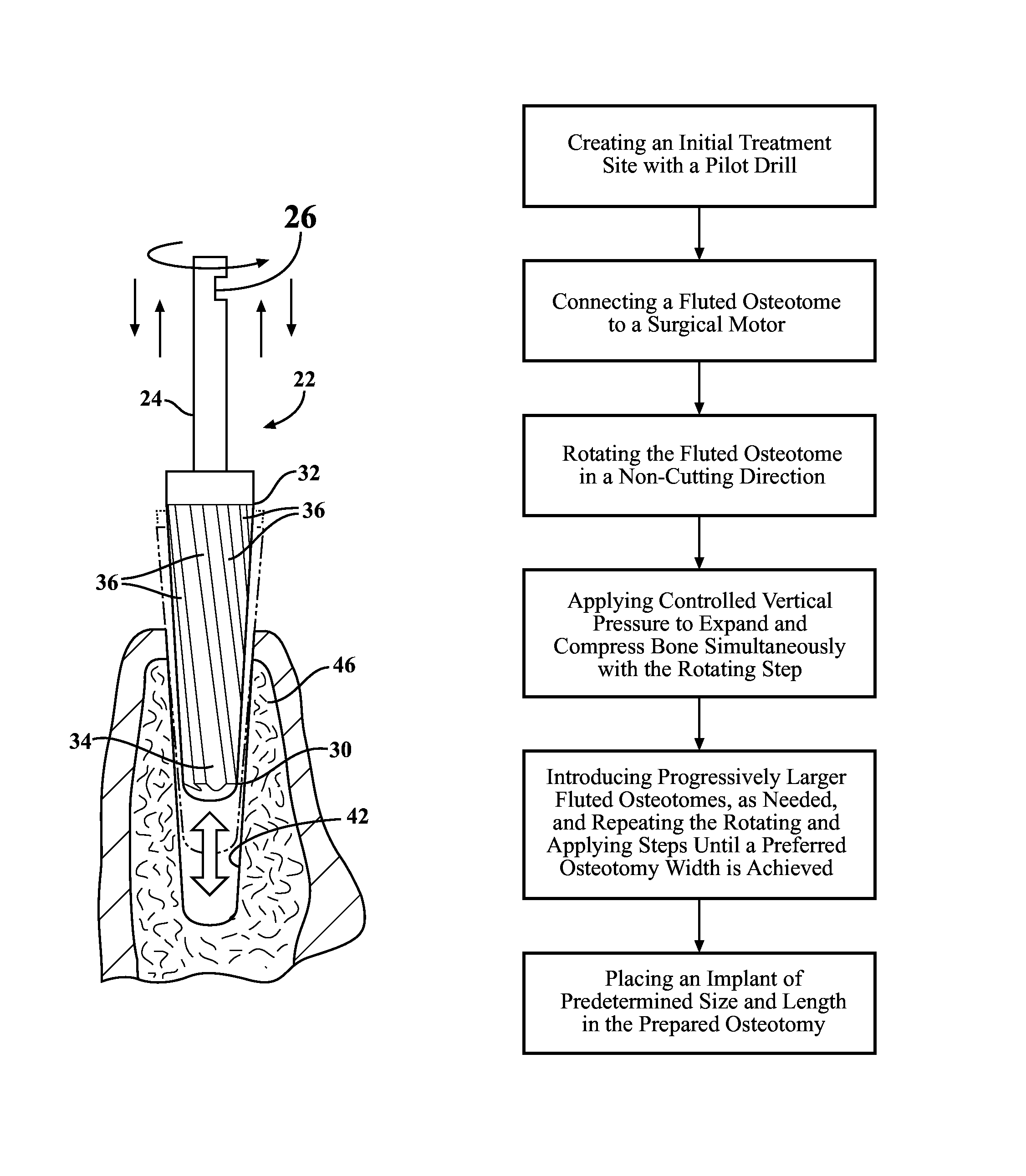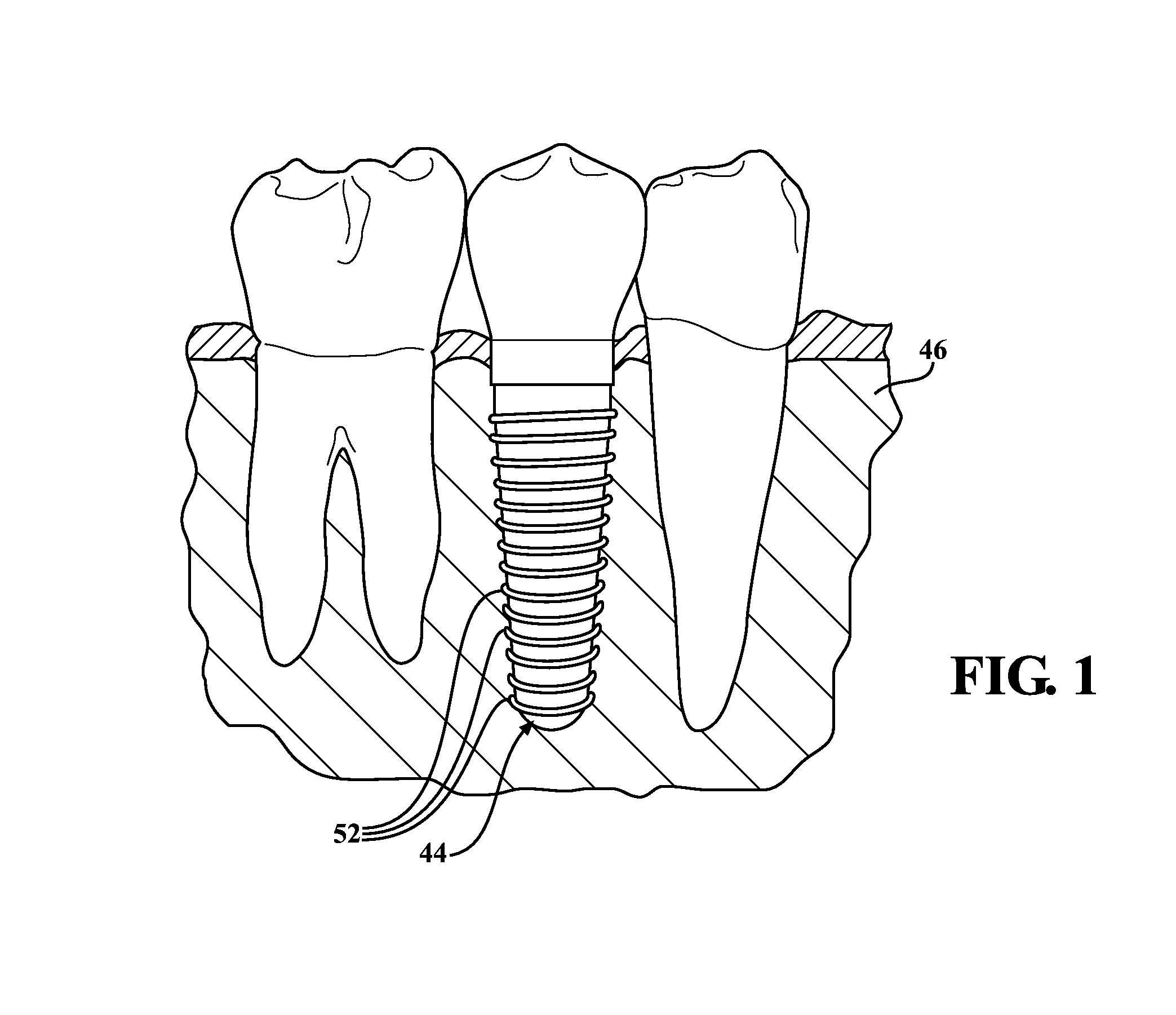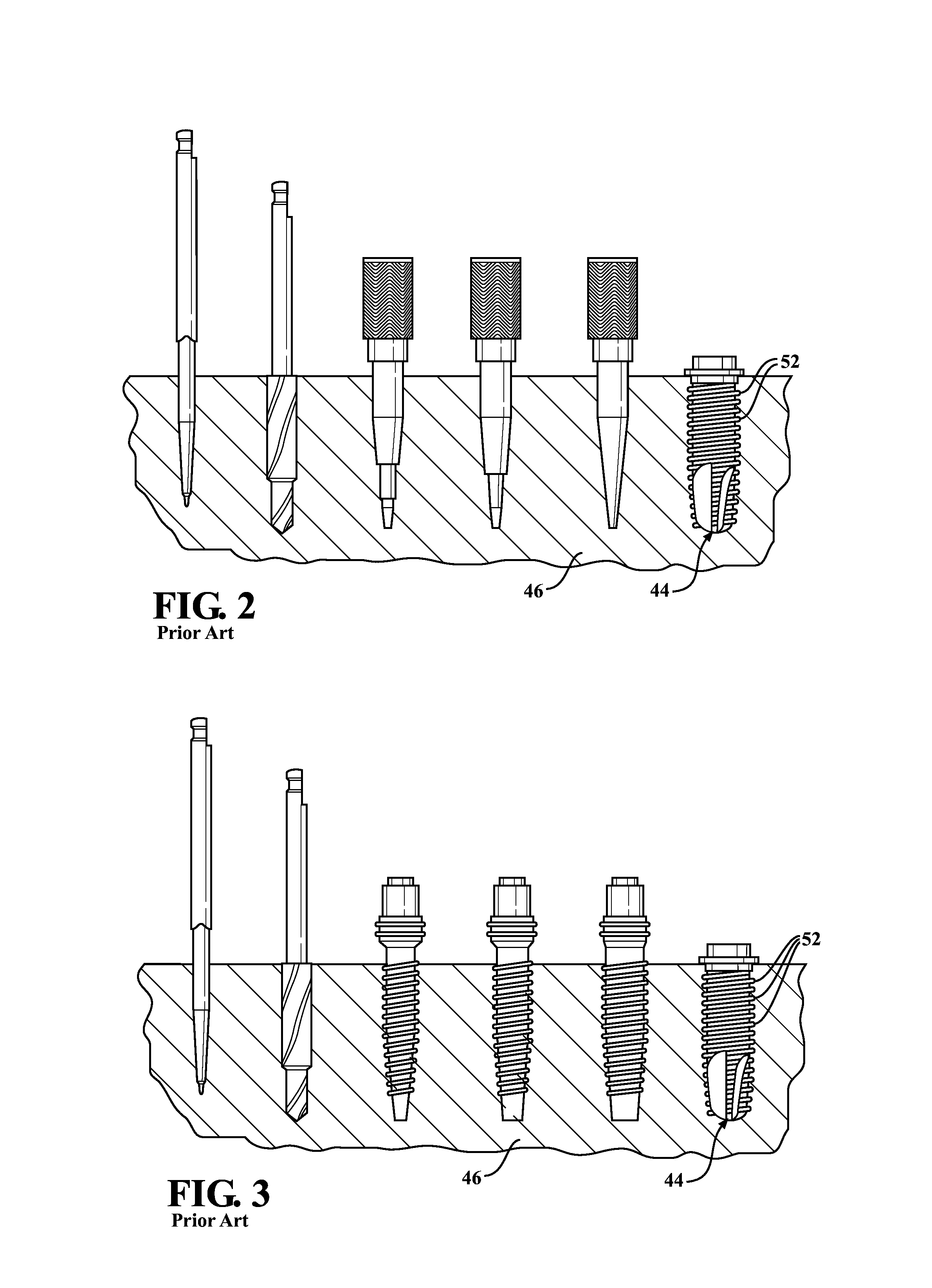Fluted osteotome and surgical method for use
a fluted osteotome and surgical method technology, applied in the field of fluted osteotomes, can solve the problems of unintentional displacement or fracture of the labial plate of bone in dental applications, limited treatment of mandibular sites, and similar challenging density and plasticity characteristics of dental bone implant sites, and achieves the effects of high controllability, relatively fast and effective technique, and effective expansion and compression of bone material at the same tim
- Summary
- Abstract
- Description
- Claims
- Application Information
AI Technical Summary
Benefits of technology
Problems solved by technology
Method used
Image
Examples
Embodiment Construction
[0049]Referring to the figures wherein like numerals indicate like or corresponding parts throughout the several views, a burnishing osteotome according to the present invention is generally shown at 22 in FIGS. 4-11 and 13. The osteotome 22 comprises a longitudinally extending shank 24. The shank 24 has a coupling 26 at one end thereof to attach to a rotary input such as from a surgical motor having speed and torque controls. The osteotome 22 also includes a working end 28. The working end 28 extends longitudinally from the shank 24 opposite the coupling 26. For dental applications as one example, the working end 28 may have a length of approximately 11-15mm, although longer or shorter lengths may also be fashioned to suit the application. As perhaps best shown in FIG. 5, the working end 28 has a taper along at least a portion of its length. A leading distal tip 30 of the working end 28 defines a minimal outer diameter, and an upper end 32 defines a maximum outer diameter of the ta...
PUM
 Login to View More
Login to View More Abstract
Description
Claims
Application Information
 Login to View More
Login to View More - R&D
- Intellectual Property
- Life Sciences
- Materials
- Tech Scout
- Unparalleled Data Quality
- Higher Quality Content
- 60% Fewer Hallucinations
Browse by: Latest US Patents, China's latest patents, Technical Efficacy Thesaurus, Application Domain, Technology Topic, Popular Technical Reports.
© 2025 PatSnap. All rights reserved.Legal|Privacy policy|Modern Slavery Act Transparency Statement|Sitemap|About US| Contact US: help@patsnap.com



